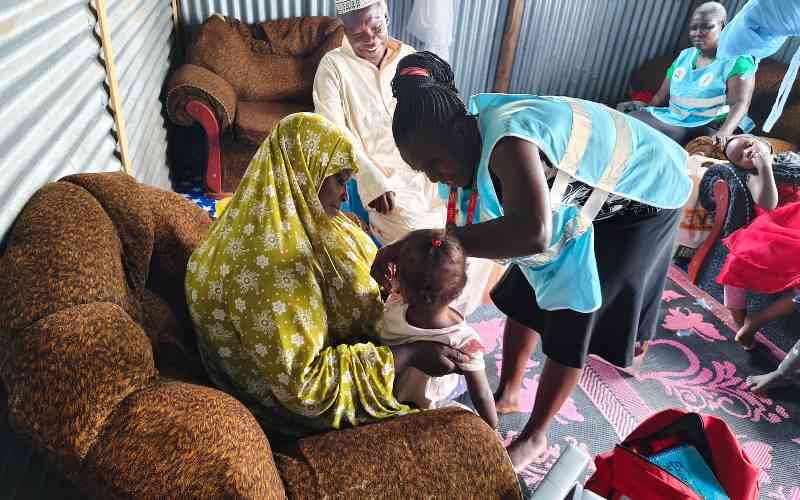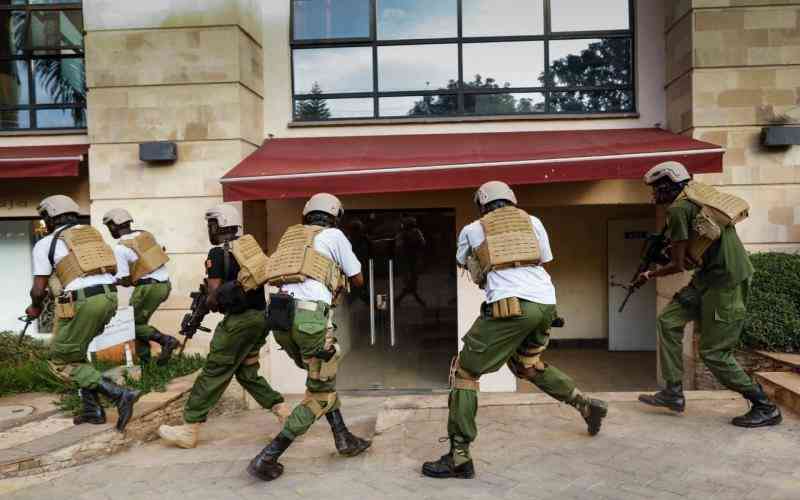 |
|
Government forensic pathologists Dr Amritpal Kalsi [Photo: Boniface Okendo/Standard] |
By Ally Jamah
The late Internal Security Minister George Saitoti may have suffered severe poisoning. The stunning revelation was made at the Commission of Inquiry probing the June helicopter crash that killed him and five others.
The information sharply contradicts an official report by the Government Chemist that the minister’s blood and tissue analysis indicated no poisoning.
Dr Dorothy Njeru and Dr Amritpal Kalsi, Government forensic pathologists who handled the bodies, told the probe team that Saitoti’s body indicated significant levels of carbon monoxide poisoning.
Similar conclusions on poisoning were reached on bodies of Orwa Ojode, pilot Nancy Gituanja, and police bodyguards Joshua Tonkei, and Thomas Murimi.
Severe poisoning
“Examination of all the bodies indicated a cherry-pink discolouration of body tissues, which is consistent with carbon-monoxide poisoning. The normal colour usually takes a darker shade,” Njeru told the commission.
In an interesting twist, the experts disowned a previous postmortem report presented to the commission by Dr Johansen Oduor (a Government forensic expert) earlier this month, which made no mention of carbon monoxide poisoning. It only indicated the death could have been caused by severe tissue injury.
Upon further inquiry by lawyers Fred Ngatia (for the Saitoti family), Njeru indicated the poisoning was at least 30 per cent of the blood and tissues of the samples taken, a level that is considered dangerous. She said the exact figure would only have been obtained by laboratory tests.
Njeru also indicated that the cherry-pink was seen in all major internal organs, meaning the poisoning from the deadly gas was severe.
She said such poisoning would normally cause drowsiness, fatigue and disorientation of its victims, but declined suggestions from Mr Ngatia that it could have led to the crash. She said she was not the right person to make such a conclusion.
A report by Assistant Government Chemist Joyce Wairimu Njoya, presented to the commission early this month, indicated that only co-pilot Luke Oyugi had carbon monoxide poisoning, while Saitoti and Gituanja returned negative results.
Bodies of Ojode, Tonkei and Murimi were not tested.
According to the Government Chemist report, Oyugi had excessive poisoning of the gas in blood (68.6 per cent), a level that would normally kill a victim since it was way above tolerable limits.
The latest revelation may add further doubt to the report, whose accuracy lawyers of the families of the victims questioned. The lawyers had wondered how Oyugi could exhibit such high levels of gas poisoning while the person seated to his right (Gituanja) indicated no such poisoning.
Stay informed. Subscribe to our newsletter
The commission, led by Justice Kalpana Rawal, may have to look closer into what might have been the source of the poisonous gas that is odourless and colourless and gradually “chokes” the ability of blood cells to deliver crucial oxygen to body tissues.
The postmortem by the Government pathologists was done by four experts, but it has now been disowned by two of them who testified that it was prepared without consultations as required.
In his testimony early this month, Dr Oduor admitted he prepared the postmortem report before seeing the Government Chemist’s report.
“If I had the advantage of seeing the findings of the Government Chemist, I would certainly have reached different conclusions in my findings,” he said then.
Njeru also revealed that most of the victims had soot in their trachea, indicating they must have been alive and breathing for some time while on air.
Her report showed the crash victims suffered 110 per cent burns, with the exception of Prof Saitoti. This fact had also been left out by the earlier report by Oduor.
 The Standard Group Plc is a
multi-media organization with investments in media platforms spanning newspaper
print operations, television, radio broadcasting, digital and online services. The
Standard Group is recognized as a leading multi-media house in Kenya with a key
influence in matters of national and international interest.
The Standard Group Plc is a
multi-media organization with investments in media platforms spanning newspaper
print operations, television, radio broadcasting, digital and online services. The
Standard Group is recognized as a leading multi-media house in Kenya with a key
influence in matters of national and international interest.
 The Standard Group Plc is a
multi-media organization with investments in media platforms spanning newspaper
print operations, television, radio broadcasting, digital and online services. The
Standard Group is recognized as a leading multi-media house in Kenya with a key
influence in matters of national and international interest.
The Standard Group Plc is a
multi-media organization with investments in media platforms spanning newspaper
print operations, television, radio broadcasting, digital and online services. The
Standard Group is recognized as a leading multi-media house in Kenya with a key
influence in matters of national and international interest.










